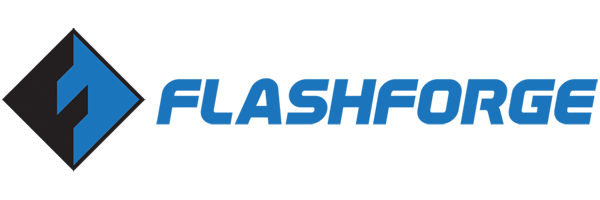21/09/23

With the continuous advancement of technology, 3D printing has become a very popular manufacturing method and inkjet technology plays a crucial role in 3D printing as well. For example, Flashforge’s application of piezoelectric wax-jet technology has brought profound changes to the jewelry manufacturing industry, resulting in ever-changing jewelry designs. This article provides a brief description of the application of inkjet technology in 3D printing.
Inkjet technology is a printing technique that achieves the printing of images or text by controlling the ejection of droplets. The core component of inkjet technology is the inkjet printhead, which is divided into two types: piezoelectric inkjet printheads and thermal inkjet printheads.
Working principle of piezoelectric inkjet printheads:
Piezoelectric inkjet technology functions as follows: Many small piezoelectric ceramics are placed near the nozzle of the inkjet printhead. Piezoelectric ceramics deform when voltage is applied across. Subsequently, ink is ejected from the nozzle, forming patterns on the surface of the substrate. With the well-designed printhead structure and effective voltage control to adjust the size and usage of ink droplets, high printing precision and quality can be achieved.
Representative manufacturers of piezoelectric inkjet printheads: Epson, Kyocera, Konica, Fuji, etc.
Thermal inkjet technology functions as follows: Use thin film resistors to instantly heat the ink with a volume less than 5μL to a temperature above 300°C in the ink ejection area. This process creates numerous tiny bubbles that rapidly gather and expand into larger bubbles at an extremely fast speed (less than 10μs), forcing the ink droplets to be ejected from the nozzle. After the bubbles continue to grow for a few microseconds, the bubbles disappear back into the resistor. With the bubbles disappearing, the ink in the nozzle will also retract. Then, due to the suction generated by the surface tension of the ink, new ink will be pulled in to replenish the ink ejection area for the next cycle of printing.
Representative manufacturers of thermal inkjet printheads: Canon, HP, etc.
The application of inkjet technology in 3D printing can be traced back to the 3D Printing (3DP) technology (powder bed and inkjet 3D printing) developed by the Massachusetts Institute of Technology (MIT) in the United States in 1993. Unlike the FDM 3D printers (such as MakerBot and RepRap) that build objects using melted plastic filaments, 3DP technology works like a 2D desktop printer of the past. Its process is somewhat similar to that of Selective Laser Sintering (SLS) technology, but instead of using lasers to sinter materials, it employs an inkjet printhead to spray liquid adhesive onto gypsum powder. It sprays one layer, then applies a thin layer of gypsum powder, repeating this process until the 3D object is fully formed.
Later, various technologies were developed based on this technique, including full-color 3D printing with gypsum powder and sand 3D printing. Below is a summary of some 3D printing manufacturers that use inkjet technology:
Industrial-grade piezoelectric inkjet printheads typically have a width ranging from 10mm to 120mm, with the orifice quantity ranging from 256 to 2,048. The printhead frequency ranges from approximately 1,000Hz to 200,000Hz, and the droplet size is around 2PL to 80PL. The resolution can range from 36dpi to 1,200dpi. Thermal inkjet printheads typically have a width ranging from 24mm to 300mm, with the orifice quantity ranging from 300 to 30,000.
Based on the parameters of inkjet printheads, it can be seen that inkjet printing offers high resolution, high throughput, high response speed, and the ability to print with multiple materials. 3D printers utilizing inkjet printing technology can achieve fast and high-resolution printing of 3D objects. For example, Flashforge’s wax 3D printer can produce high-quality wax patterns for jewelry with an accuracy of 50μm. Additionally, inkjet printheads allow for simple and quick assembly, making it possible to print large-size objects with 3D printers. For instance, Voxeljet and GE are developing a sand binder jetting 3D printer with the build volume of 8m*4m*2m.
Due to the complex structure of inkjet printheads and the small diameter of orifices (typically around 20μm to 40μm), there are high requirements for the ink surface tension, viscosity, and particle size. If the ink is of poor quality, issues such as ink skipping, scattered dots, and nozzle clogging may occur. When the ink impacts the substrate or powder surface at a speed of 5-10m/s, diffusion, penetration, and even splashing phenomena may occur. Improper parameter settings can significantly affect the printing quality. Therefore, in order to succeed in inkjet 3D printing technology, the R&D team must have a solid understanding of inkjet printing principles and possess comprehensive knowledge about materials and inks.
As a large-sized high-precision multi-nozzle wax 3D printer, WaxJet400 is capable of printing smooth and highly detailed wax molds suitable for various fields like jewelry, crafts, precision casting, and aerospace investment casting. It boasts four core functions:
Using WaxJetPrint, users can import model data and initiate the printing process with a simple click. By adding the file data to the print queue and clicking ‘Print’, the system automatically completes the model manufacturing process.
Equipped with a 2*2 ink bottle configuration, WaxJet400 automatically switches to another bottle when one is depleted. The system continuously monitors ink usage and prompts users to replace it when running low, preventing production delays due to insufficient materials.
The device comes with a pre-installed maintenance schedule, which reminds users to maintain the equipment based on the usage time of its spare parts. Regular maintenance ensures the device operates smoothly, prolongs its lifespan, and maintains stable printing quality.
This powerful feature allows batch importing of model data, customizing attributes, and selecting automatic placement areas and heights. By setting preset iteration times, the system can choose the optimal solution, achieving efficient automated layout and saving users time and effort.
In summary, WaxJet400 is a fully-featured and user-friendly high-precision multi-nozzle wax 3D printer.